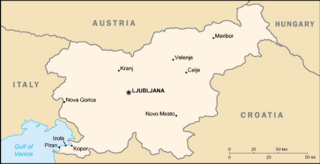
The Bełchatów Power Station is a coal-fired power station near Bełchatów, Poland. It is the largest thermal power station in Europe and the world's most carbon polluting. The power station is owned and operated by PGE GiEK Oddział Elektrownia Bełchatów, a subsidiary of Polska Grupa Energetyczna.
EnergyAustralia is an electricity generation, electricity and gas retailing private company in Australia, a wholly owned subsidiary of the Hong Kong-based and listed CLP Group. EnergyAustralia also had a portfolio of generating sites using thermal coal, natural gas, hydro-electric, solar energy, and wind power.

The Yallourn Power Station, now owned by EnergyAustralia a wholly owned subsidiary of the Hong-Kong-based CLP Group, is located in the Latrobe Valley of Victoria, Australia, beside the Latrobe River, with the company town of Yallourn located to the south west. Yallourn PS was a complex of six brown coal–fired thermal power stations built progressively from the 1920s to the 1960s; all except one have now been decommissioned. Today, only the 1,450 megawatts (1,940,000 hp) Yallourn W plant remains. It is the second largest power station in Victoria, supplying 22% of Victoria's electricity and 8% of the National Electricity Market. The adjacent open cut brown coal mine is the largest open cut coal mine in Australia, with reserves sufficient to meet the projected needs of the power station to 2028. On 10 March 2021, EnergyAustralia announced that it will close the Yallourn Power Station in mid-2028, four years ahead of schedule, and instead build a 350 megawatt battery in the Latrobe Valley by the end of 2026. At the time, Yallourn produced about 20% of Victoria's electricity.

Niederaussem Power Station is a lignite-fired power station in the Bergheim Niederaussem/Rhein Erft circle, owned by RWE. It consists of nine units, which were built between 1963 and 2003. It is the second-largest lignite coal power plant in operation in Germany, with total output capacity of 3,864 MW and a net capacity of 3,396 MW. The plant is estimated to have been one of the ten most carbon polluting coal-fired power plants in the world in 2018, at 27.2 million tons of carbon dioxide, and its emissions intensity is estimated to be 45.1% higher relative to the average for all fossil-fueled plants in Germany. According to the study Dirty Thirty, issued in 2007 by the WWF, Niederaussem Power Station is the second worst power station in Europe in terms of mercury emissions due to the use of lignite.

Greenhouse gas emissions from human activities strengthen the greenhouse effect, causing climate change. Most is carbon dioxide from burning fossil fuels: coal, oil, and natural gas. The largest emitters include coal in China and large oil and gas companies, many state-owned by OPEC and Russia. Human-caused emissions have increased atmospheric carbon dioxide by about 50% over pre-industrial levels.

A coal-fired power station or coal power plant is a thermal power station which burns coal to generate electricity. Worldwide there are about 8,500 coal-fired power stations totaling over 2,000 gigawatts capacity. They generate about a third of the world's electricity, but cause many illnesses and early deaths, mainly from air pollution.

A gas-fired power plant or gas-fired power station or natural gas power plant is a thermal power station which burns natural gas to generate electricity. Natural gas power stations generate almost a quarter of world electricity and a significant part of global greenhouse gas emissions and thus climate change. However they can provide seasonal dispatchable generation to balance variable renewable energy where hydropower or interconnectors are not available.

Climate change is already affecting Japan, and the Japanese government is increasingly enacting policy to respond. However, its climate change policy has been described as "dirty" and the government criticised for lacking a credible plan to get to its pledged net zero greenhouse gas emissions by 2050. As a signatory of the Kyoto Protocol, and host of the 1997 conference which created it, Japan is under treaty obligations to reduce its carbon dioxide emissions and to take other steps related to curbing climate change.

Ember, formerly Sandbag or Sandbag Climate Campaign, is an environmental non-profit think tank, campaigning to reduce the use of coal. Based in the UK, the organisation was launched in 2008 by Bryony Worthington and was the first member of The Guardian's Environment Network.

Total primary energy supply (TPES) in Slovenia was 6.80 Mtoe in 2019. In the same year, electricity production was 16.1 TWh, consumption was 14.9 TWh.
Stranded assets are "assets that have suffered from unanticipated or premature write-downs, devaluations or conversion to liabilities". Stranded assets can be caused by a variety of factors and are a phenomenon inherent in the 'creative destruction' of economic growth, transformation and innovation; as such they pose risks to individuals and firms and may have systemic implications. Climate change is expected to cause a significant increase in stranded assets for carbon-intensive industries and investors, with a potential ripple affect throughout the world economy.

The Vindhyachal Thermal Power Station is located in Singrauli district in the Indian state of Madhya Pradesh. One of the coal-fired power stations of NTPC, it is the largest power station in India, and the 9th largest coal-fired power station in the world, with an installed capacity of 4,760 MW. The coal for the power plant is sourced from Nigahi mines, and the water is sourced from the discharge canal of Singrauli Super Thermal Power Station. The plant is estimated to have been the coal-fired power plant which emitted the second most carbon dioxide in 2018, after Bełchatów Power Station, at 33.9 million tons, and relative emissions are estimated at 1.485 kg per kWh.

Turkey uses more electricity per person than the global average but less than the European average, with demand peaking in summer due to air conditioning. Most electricity is generated from coal, gas and hydropower. The hydroelectricity from the east is transmitted to big cities in the west. Electricity prices are state-controlled, but wholesale prices are heavily influenced by the cost of imported gas.

Coal, lorries and cows vent almost half of Turkey's five hundred million tonnes of annual greenhouse gas emissions—mostly carbon dioxide with some methane—and these are part of the cause of climate change in Turkey. The nation's coal-fired power stations emit the most carbon dioxide, and other significant sources are vehicles running on petrol or diesel. After coal and oil the third most polluting fuel is fossil gas; which is burnt in Turkey's gas-fired power stations, homes and workplaces. Much methane is belched by livestock; cows alone produce half of the greenhouse gas from agriculture in Turkey.

Coal supplies over a quarter of Turkey's primary energy. The heavily subsidised coal industry generates over a third of the country's electricity and emits a third of Turkey's greenhouse gases.
Afşin-Elbistan C is a planned 1800-MW coal-fired power station which was proposed to be built in Turkey by the state-owned mining company Maden Holding. Estimated to cost over 17 billion lira, at planned capacity it would generate about 3% of the nation's electricity. According to the environmental impact assessment, the plant would have burned 23 million tonnes of lignite annually, and emit over 61 million tonnes of CO2 each year for 35 years. However in 2021 Turkey targeted net zero carbon emissions by 2053. It would have been the least carbon efficient coal-fired power station and the largest single emitter of greenhouse gas in the world.
İsken Sugözü power station is a 1320 MW operational coal fired power station in Turkey.

Coal power in Turkey generates between a quarter and a third of the nation's electricity. There are 55 coal-fired power stations with a total capacity of 20 gigawatts (GW).
Yonghungdo Power Station is a large coal-fired power station on Yonghungdo Island near Inchon, South Korea, owned by Korea Electric Power Corporation. The plant is estimated to have been the coal-fired power plant which emitted the ninth most carbon dioxide in 2018, at 27 million tons, and relative emissions are estimated at 1.5 kg per kWh. Conversion to gas is being considered.












